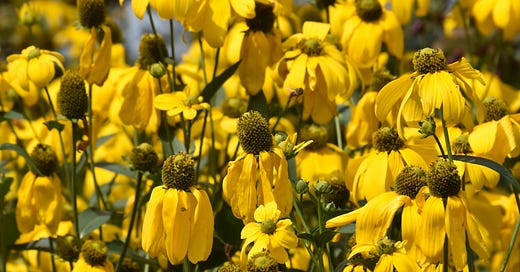As readers of this newsletter know, I'm both a fierce advocate for permaculture and a loving critic. And one of my biggest criticisms—the one that bothers me the most—is the thoughtless preference for non-native species, which often includes the promotion of invasives, a primary cause of biodiversity loss.
This flagrant hypocrisy and science denialism from people who claim to practice "Earth care" frankly makes me want to abandon the movement entirely. But I'm not there yet. The reason being that I still see value in permaculture ethics and design principles, even if I think they're often applied in distorted ways.
I will say, too, that I don't hold it against anyone if they've never learned about the importance of native species. I was ignorant of them myself until quite recently. I don't expect anyone to know about things to which they've never been exposed, and native plant education is sorely lacking. I reserve my irritation for those who know the reality and choose to deny it in the interest of harvesting some mediocre berries. This kind of willful ignorance is just another form of extractivism: a destructive relationship to our ecosystem based on an extremely narrow understanding of one's own self-interest.
So with the goal of advancing the cause of native plant permaculture, I'm going to share some of my own designs for polycultures that I'll be planting on my own land in the coming years.
First up, we have a Salad Bar polyculture: native tree species that offer edible greens paired with a nitrogen-fixing and edible understory, plus an edible backdrop. Once established, this perennial polyculture should provide a perpetual supply of spring greens for salads or cooking with virtually no inputs.
Crucially, this polyculture offers real support for biodiversity in addition to an excellent yield for humans. Some of the species included do offer lovely flowers supporting native pollinators, but even more importantly they are host species for native insects, which non-native flowers generally are not. (Host species are often overlooked in favor of non-native flowers, which usually do more harm than good, even if they're occasionally visited by non-native honeybees.) Several species also offer seeds that are a vital food source for native song and game birds. So this is a polyculture that will feed you and lots of other species, too, if you live in the Northeastern portion of North America. I’ve included links to purchase all of the relevant seeds and bare root trees.
The Northeast Native Salad Polyculture:




